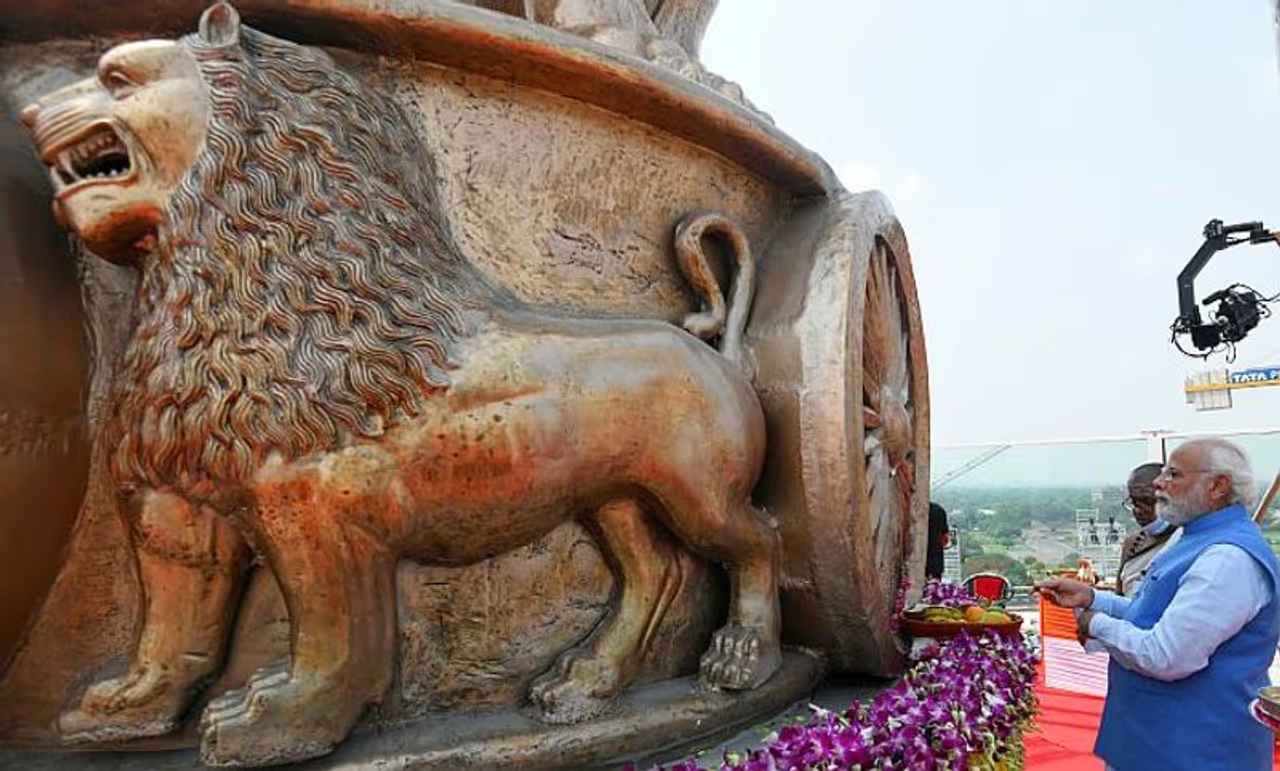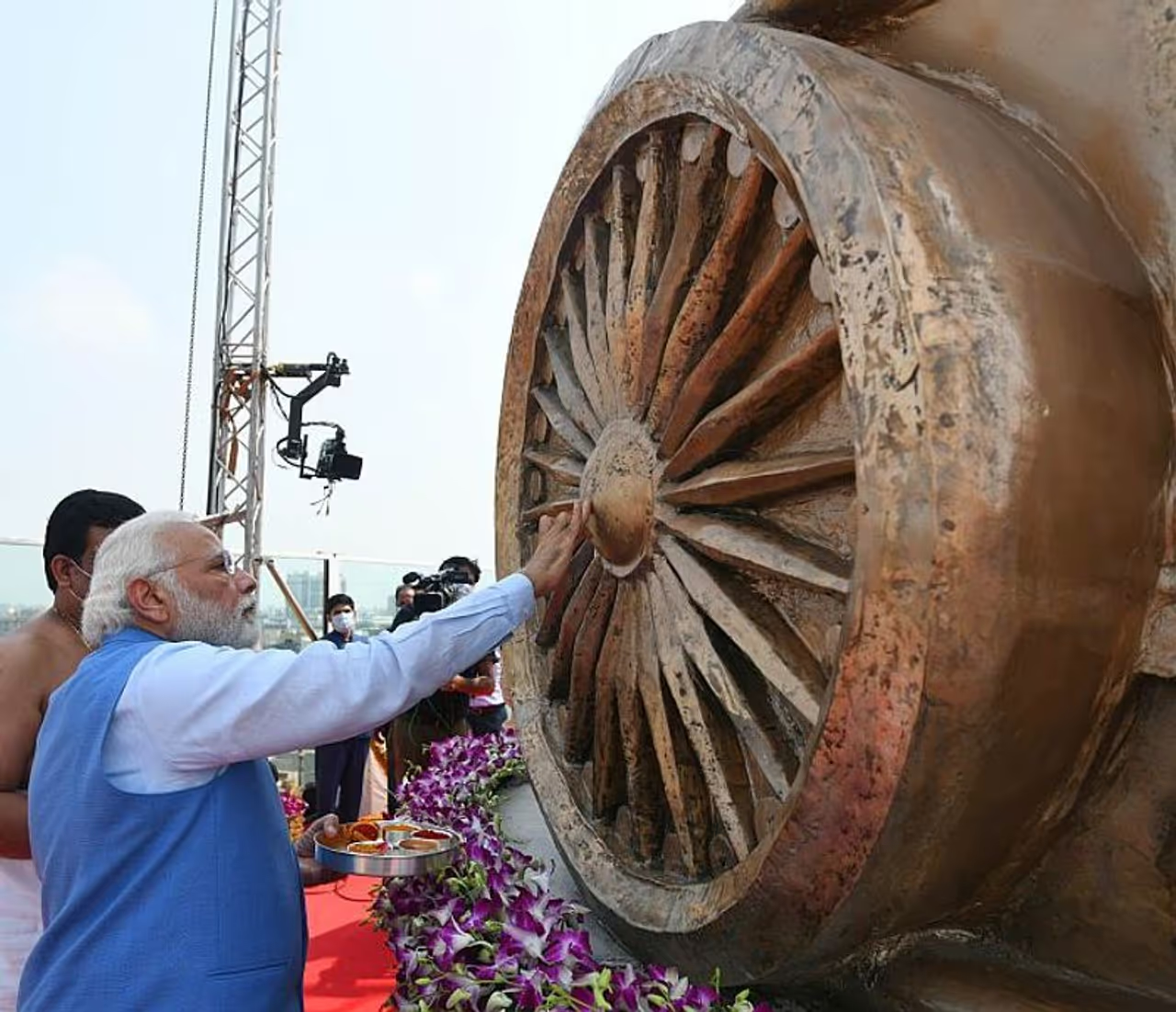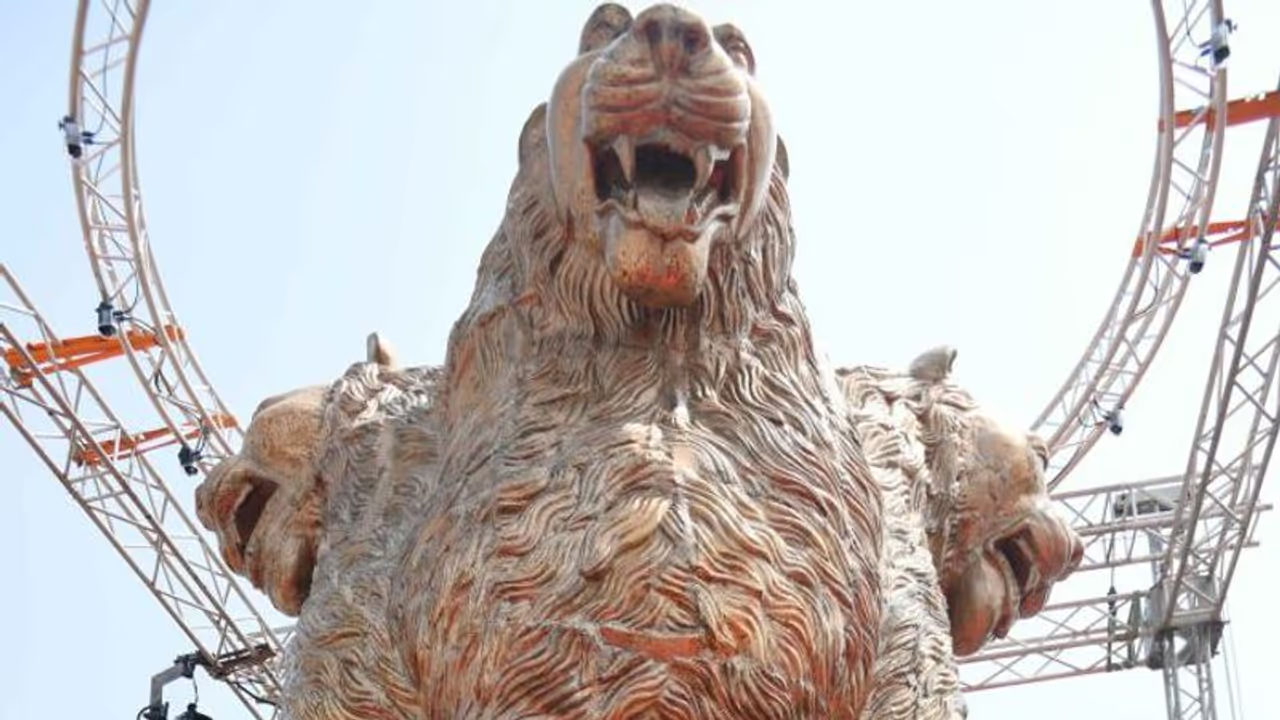Prime Minister Narendra Modi on Monday unveiled the fully hand-crafted, 6.5-meter national emblem weighing 16,000 kg on top of the new Parliament building. Made of high-purity bronze, the emblem was designed, crafted and cast for over six months by over 100 artisans across the country.
Prime Minister Narendra Modi on Monday unveiled the fully hand-crafted, 6.5-meter national emblem weighing 16,000 kg on top of the new Parliament building.

The national emblem is an adaptation of King Asoka's Sarnath Lion capital. The structure, preserved in the Sarnath museum, has four lions mounted back-to-back on a circular abacus.
Also Watch: India@75: Titus, the only Christian among 81 satyagrahis who walked in Dandi March
The frieze of the abacus has a galloping horse, an elephant, a bull and a lion separated by the Dharma Chakras.

Made of high-purity bronze, the emblem was designed, crafted and cast for over six months by over 100 artisans across the country. To make the National Emblem:
Step 1
A computer graphic sketch was made
Step 2
A clay model was created based on the sketch
Step 3
After approval from competent authorities, the FPR model was made
Step 4
A wax mould and bronze cast were made.
Step 5
The inner portion of the mould was brushed with melted wax to achieve the final bronze's desired thickness.
Step 6
A heat-resistant mixture was filled into the wax shell. Wax tubes were fitted outside the shell. The tubes provided ducts for pouring bronze during casting and release points for gases generated during the process.

Step 7
Metal pins were then hammered through the shell into the core to secure it.
Step 8
The prepared wax shell was covered in layers of heat-resistant fibre-reinforced plastic. The whole shell was inverted and moved into an oven.
Step 9
Once the plaster dried, the wax was released through ducts created by the wax tubes.
Step 10
After that, the plaster mould was packed with sand, and molten bronze was poured through the ducts, filling the space left by the wax.
Step 11
The outer plaster and core were removed once the mould cooled down so that the bronze received finishing touches.
Step 12
The statue was polished and breezed. It also received a clear coat of protective polish to showcase the rich metal.
Also Watch: India@75: The extraordinary story of Captain Lakshmi
